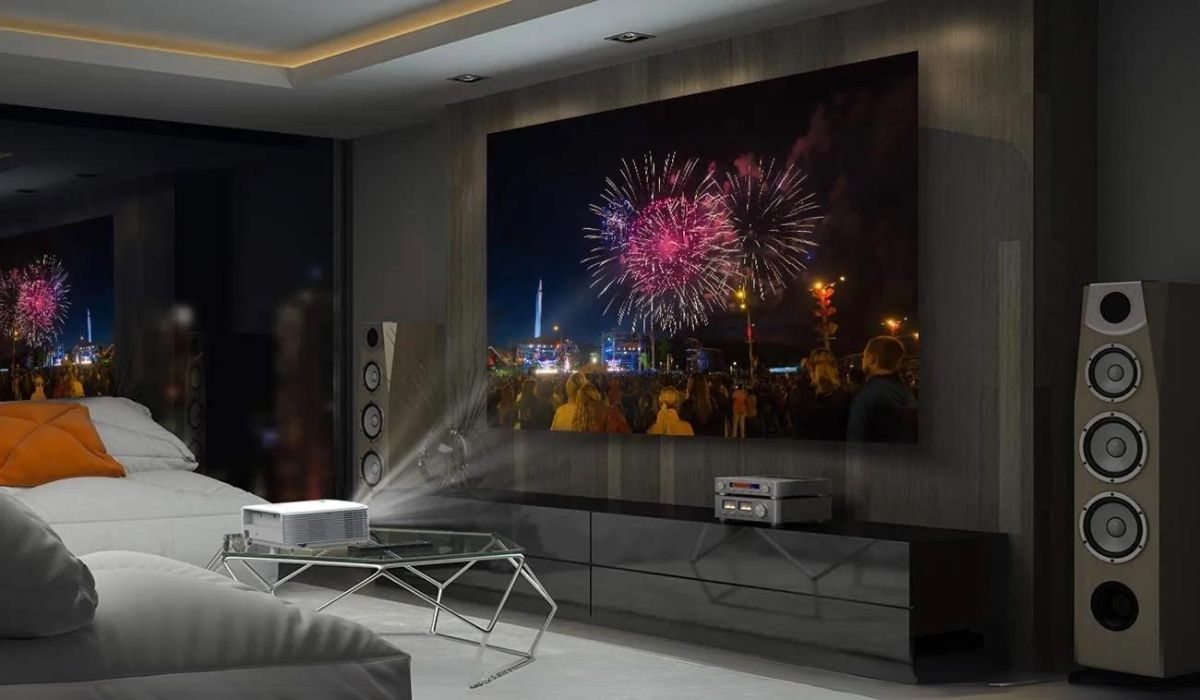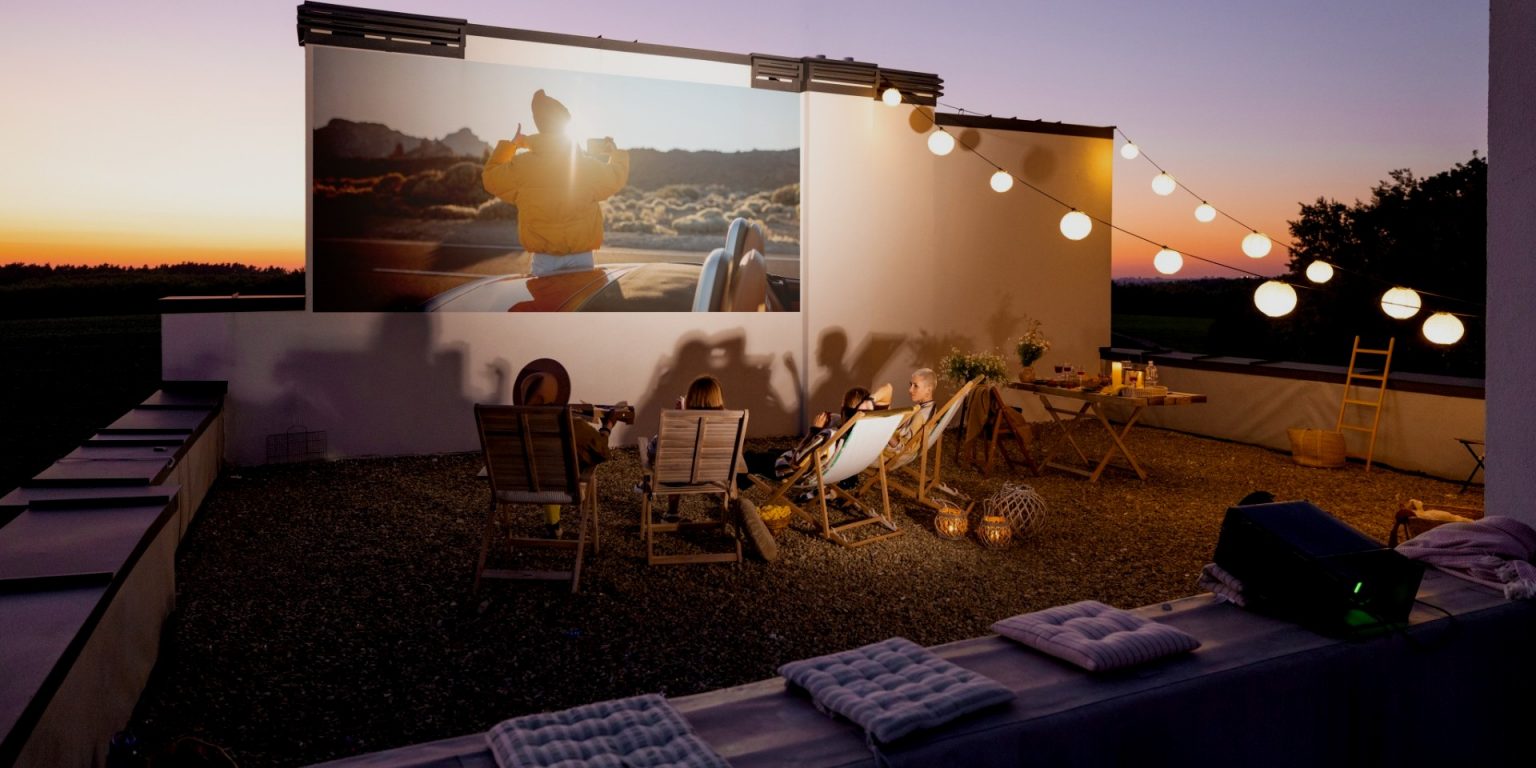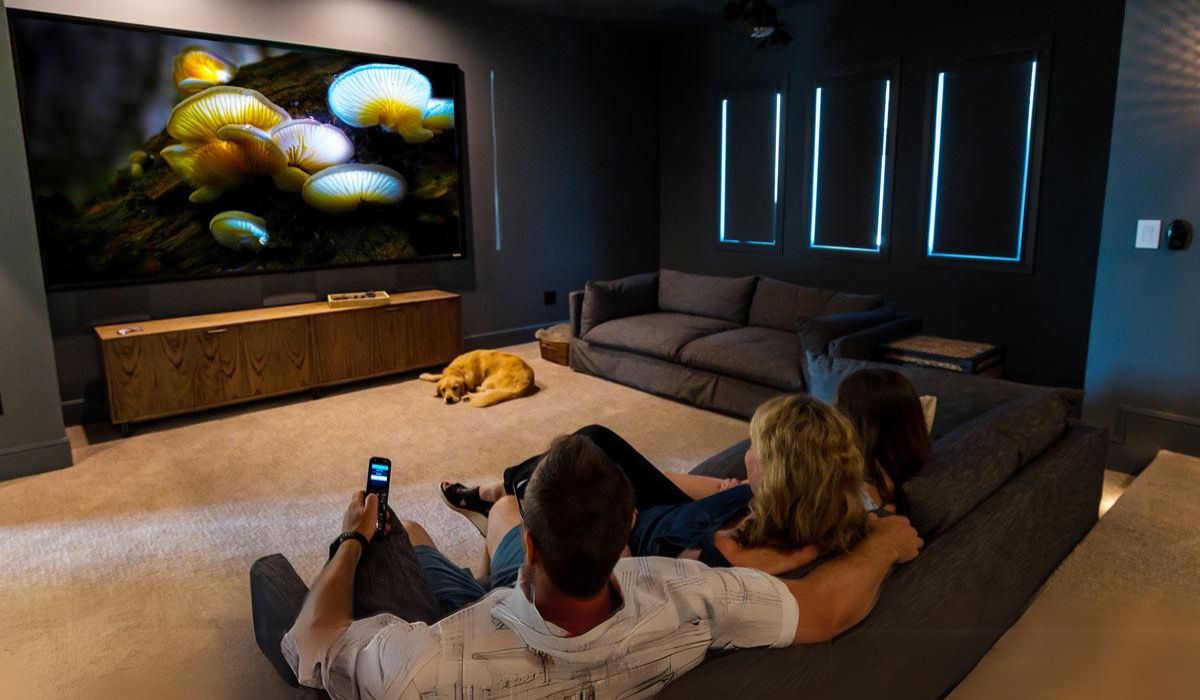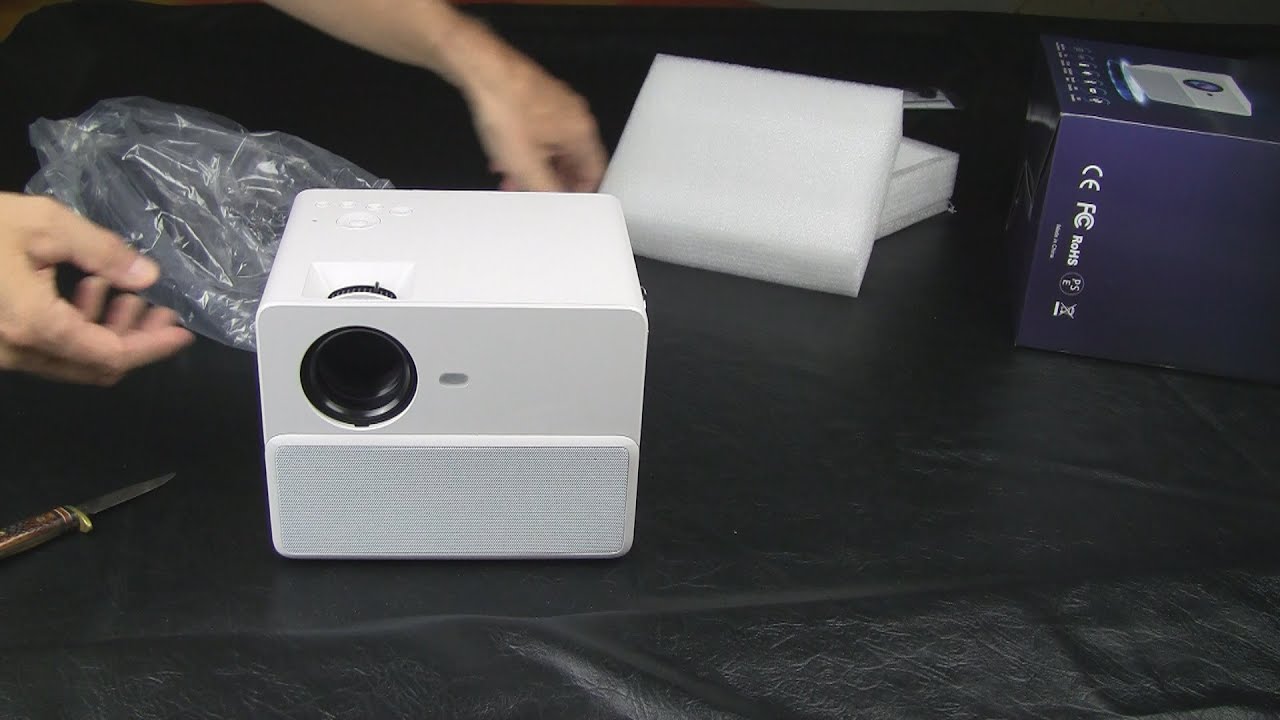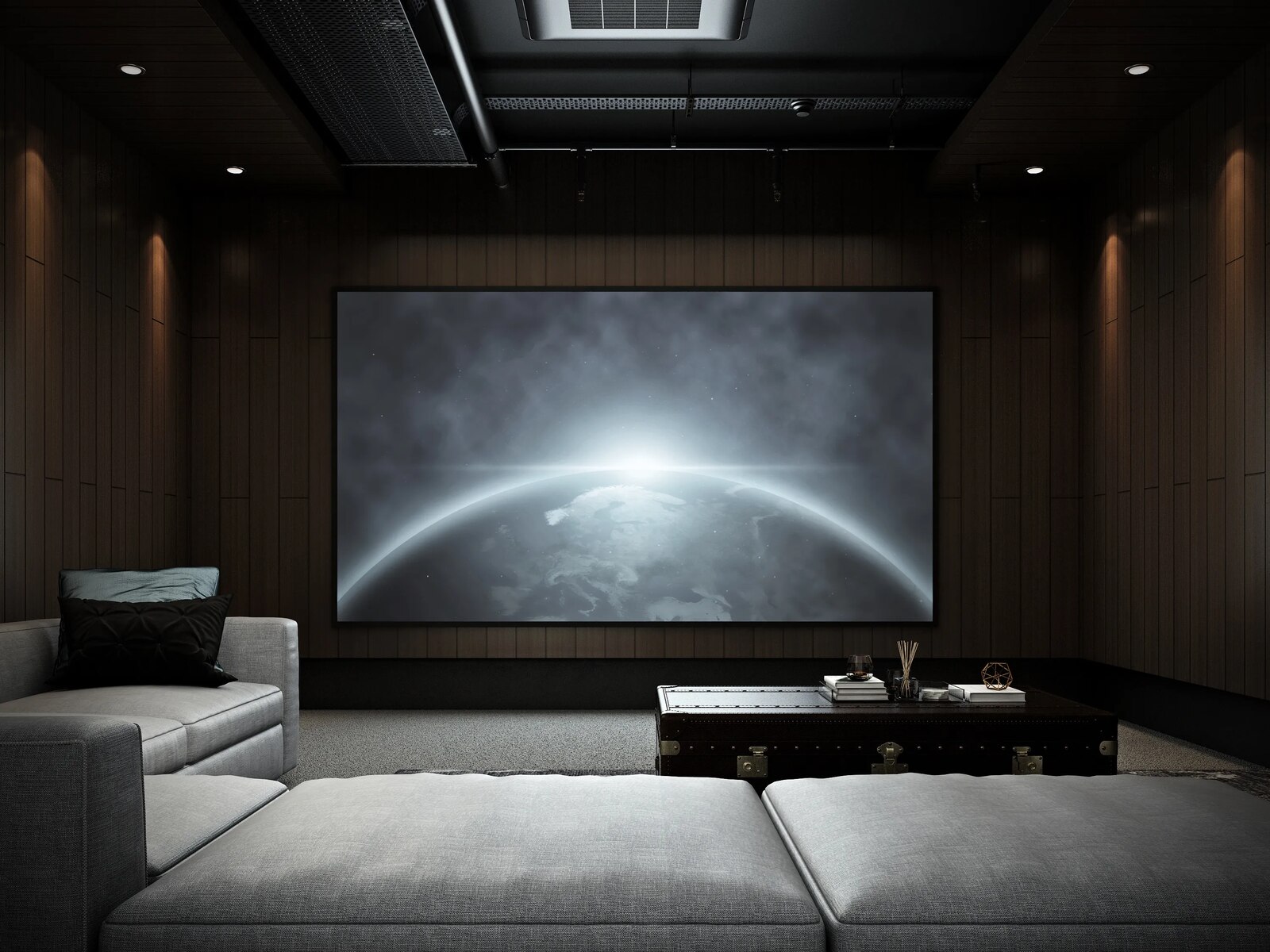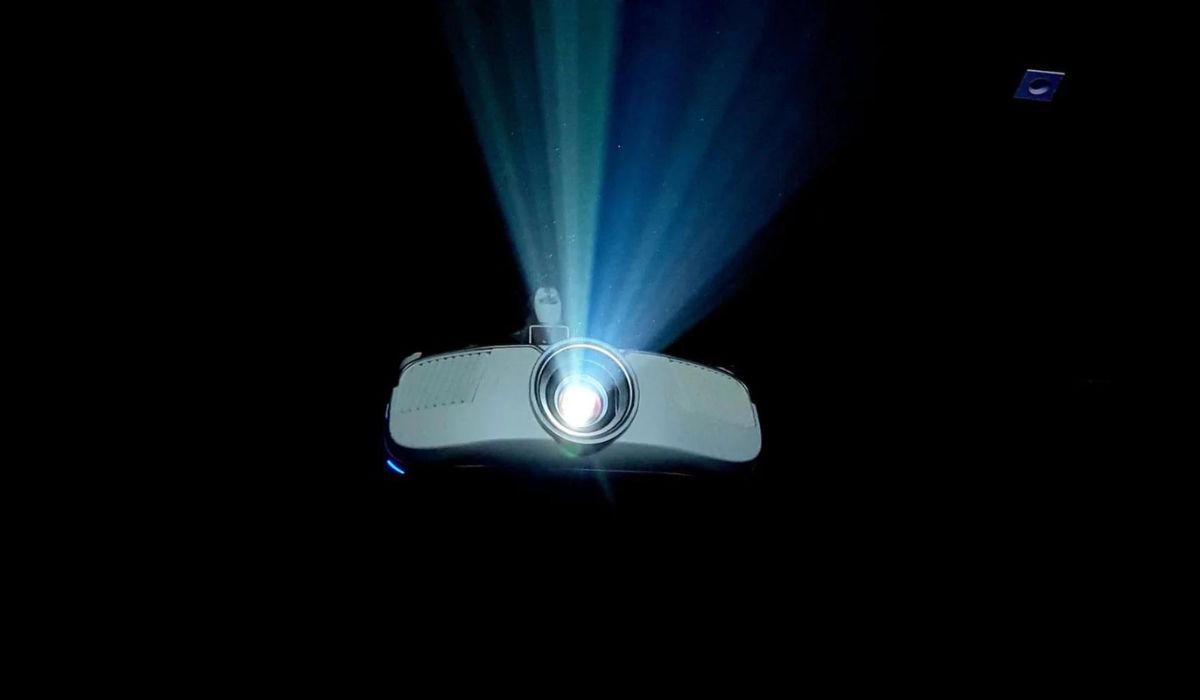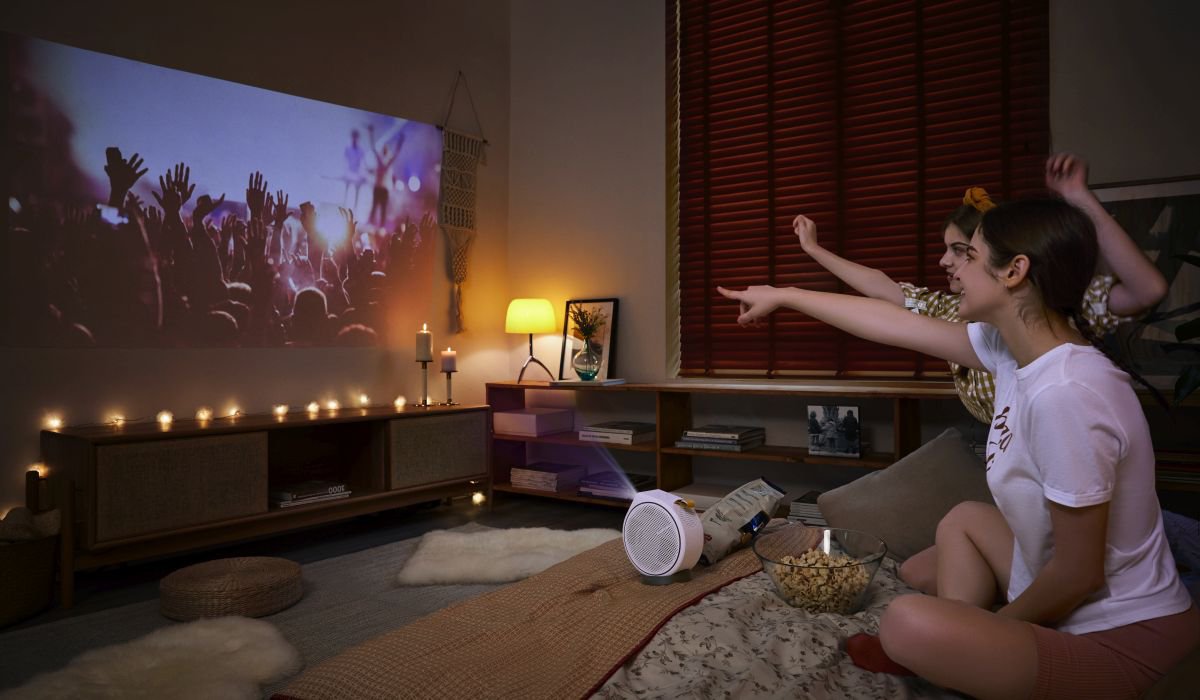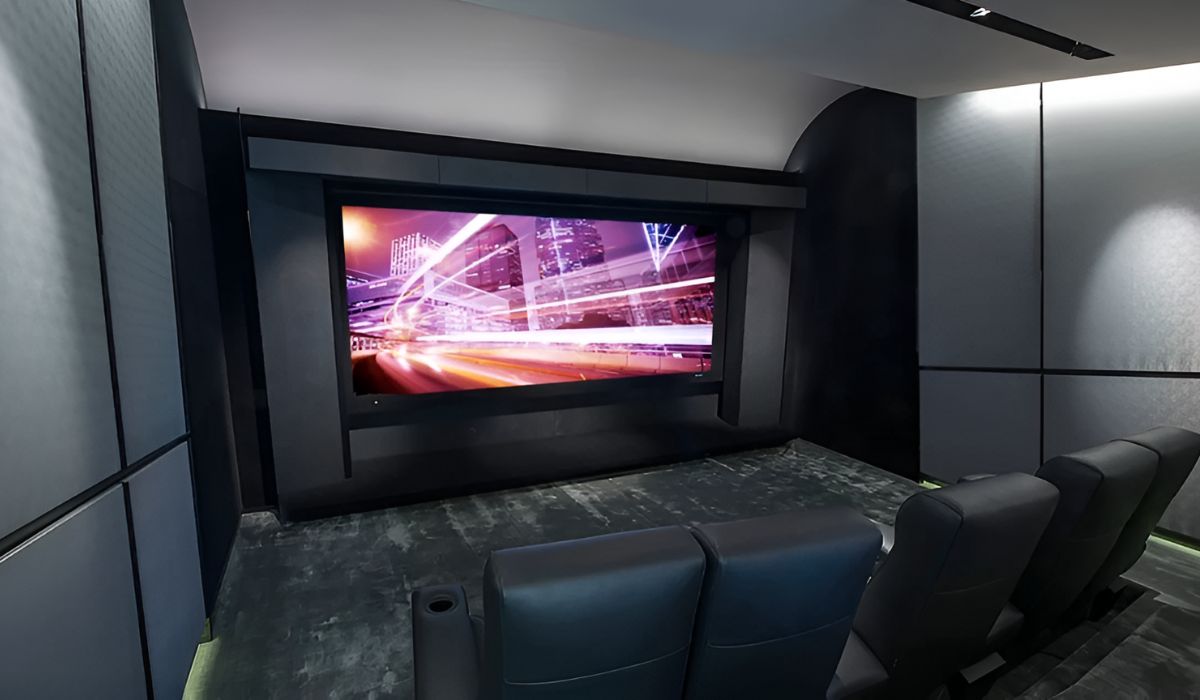Introduction
Setting up a home theater projector with external speakers can transform your living room into a cinematic experience. Whether you're a movie buff, a gaming enthusiast, or a sports fanatic, a well-configured projector and speaker system can elevate your entertainment to a whole new level. This guide will walk you through the process of choosing the right projector, selecting external speakers, connecting the two, and optimizing the settings for an immersive home theater experience.
The beauty of a home theater projector lies in its ability to display larger-than-life images on a screen or a blank wall, delivering a truly cinematic experience. When paired with high-quality external speakers, the audio-visual synergy can rival that of a commercial movie theater. Whether you're hosting a movie night with friends, enjoying a gaming marathon, or simply unwinding with your favorite TV show, a home theater projector and external speakers can make it an unforgettable experience.
In this guide, we'll cover the essential steps to set up your home theater projector with external speakers, from selecting the right equipment to fine-tuning the settings for optimal performance. By the end of this journey, you'll be ready to immerse yourself in the captivating world of larger-than-life visuals and immersive sound, right in the comfort of your own home. Let's dive into the exciting realm of home theater technology and unleash the full potential of your entertainment space.
Choosing the Right Projector
When embarking on the journey of setting up a home theater projector with external speakers, selecting the right projector is a critical first step. The market offers a wide array of projectors with varying features, specifications, and price points, making the selection process both exciting and potentially overwhelming. To make an informed decision, consider the following factors:
- Resolution: The resolution of the projector determines the clarity and sharpness of the images it produces. For a truly immersive experience, consider a projector with at least Full HD (1920 x 1080) resolution or higher, especially if you plan to use it for watching movies or gaming.
- Brightness: The projector’s brightness, measured in lumens, is crucial, especially if your home theater room is not completely dark. Opt for a projector with higher lumens for a brighter image, ensuring that ambient light doesn’t wash out the visuals.
- Throw Distance: The throw distance refers to the distance between the projector and the screen or wall onto which the image is projected. Depending on your room size, opt for a projector with a throw distance suitable for your space to achieve the desired screen size.
- Connectivity: Consider the connectivity options offered by the projector, such as HDMI, USB, and wireless capabilities. Ensure that the projector has the necessary ports to connect to your media sources and external speakers.
- Image Processing Features: Look for projectors with advanced image processing features, such as frame interpolation and color enhancement, to improve the overall visual quality.
Furthermore, consider the aspect ratio, contrast ratio, and any additional features that align with your specific entertainment needs. Whether you prioritize vibrant colors for movie nights, low input lag for gaming, or versatile connectivity options for various media sources, understanding your requirements will guide you in selecting the perfect projector for your home theater setup.
By carefully evaluating these factors and understanding your specific preferences, you can narrow down the options and choose a projector that seamlessly integrates with your home theater environment, setting the stage for an exceptional audio-visual experience.
Selecting External Speakers
Choosing the right external speakers is paramount in creating an immersive home theater experience that complements the visual prowess of your projector. The speakers play a pivotal role in delivering rich, dynamic sound that brings movies, games, and music to life. To ensure that your audio setup harmonizes with the visual spectacle, consider the following factors when selecting external speakers:
- Speaker Configuration: Determine whether you prefer a 2.1, 5.1, or 7.1 speaker configuration, depending on the size of your room and your audio preferences. A 2.1 setup includes two speakers and a subwoofer, while 5.1 and 7.1 configurations incorporate additional surround speakers for a more enveloping soundstage.
- Sound Quality: Prioritize speakers that offer high-fidelity sound reproduction, with clear highs, detailed midrange, and impactful bass. Look for speakers with a wide frequency response range and low distortion to ensure an immersive audio experience.
- Compatibility: Ensure that the external speakers are compatible with the audio output options of your projector. Whether you opt for wired or wireless connections, verify that the speakers can seamlessly integrate with the projector’s audio output.
- Size and Aesthetics: Consider the physical dimensions and aesthetics of the speakers, ensuring that they complement your home theater environment without overwhelming the space. Sleek, unobtrusive speaker designs can blend seamlessly with your decor while delivering exceptional audio performance.
- Brand Reputation and Reviews: Research reputable speaker brands known for their quality and performance. Reading user reviews and expert opinions can provide valuable insights into the real-world performance of the speakers you’re considering.
Furthermore, consider the specific audio requirements of your entertainment preferences. Whether you prioritize cinematic surround sound for movies, spatial audio for gaming, or crisp, balanced sound for music, tailoring your speaker selection to your preferences will enhance the overall home theater experience.
By carefully evaluating these factors and aligning the speaker specifications with your audio preferences, you can select external speakers that seamlessly integrate with your home theater projector, elevating your audio-visual escapades to new heights of sensory delight.
Connecting the Projector to the Speakers
Once you have chosen the right projector and external speakers for your home theater setup, the next crucial step is to connect the two seamlessly to ensure synchronized audio-visual performance. Depending on the connectivity options available on your projector and speakers, the following steps will guide you through the process of establishing a seamless connection:
- Identify Audio Output on the Projector: Check the projector for audio output options, such as a 3.5mm audio jack, RCA output, HDMI ARC (Audio Return Channel), or optical audio output. The availability of these options will determine the type of connection to be established with the external speakers.
- Choose the Connection Method: Based on the available audio output on the projector and the input options on the external speakers, select the appropriate connection method. If both the projector and speakers support HDMI ARC, utilizing this feature can simplify the connection and enable audio to be sent from the projector to the speakers over the HDMI cable.
- Wired Connection: If the projector and speakers have compatible audio ports, such as 3.5mm, RCA, or optical, use the corresponding cables to establish a wired connection. Ensure that the cables are securely connected to the respective audio ports to facilitate uninterrupted audio transmission.
- Wireless Connection: Some projectors and speakers support wireless connectivity, allowing for a cable-free setup. If your devices are equipped with Bluetooth or Wi-Fi capabilities, follow the manufacturer’s instructions to pair the projector with the speakers wirelessly for seamless audio transmission.
- Configure Audio Settings: Access the audio settings on the projector to designate the audio output source, ensuring that the sound is routed to the external speakers. Depending on the projector model, you may need to navigate the on-screen menu or settings interface to configure the audio output settings.
By establishing a secure and compatible connection between the projector and external speakers, you pave the way for a cohesive audio-visual experience that transcends the boundaries of conventional home entertainment. The seamless integration of these components sets the stage for an immersive journey into the realms of cinematic visuals and captivating soundscapes.
Setting Up the Home Theater Environment
Creating an optimal home theater environment is essential for maximizing the immersive potential of your projector and external speakers. From the arrangement of furniture to the control of ambient lighting, several factors contribute to the overall atmosphere of your home theater. Consider the following aspects when setting up your home theater environment:
- Room Layout and Seating: Arrange your furniture to optimize the viewing angles and ensure that every seat offers a clear view of the screen. Consider investing in comfortable seating that enhances the viewing experience while maintaining an appropriate distance from the screen for optimal immersion.
- Light Control: Minimize ambient light in the room to prevent it from diluting the projected images. Installing blackout curtains or blinds can effectively control natural light, while dimmable overhead lights or wall sconces provide flexibility in adjusting the room’s lighting to suit different viewing scenarios.
- Acoustic Treatment: Consider implementing acoustic panels or sound-absorbing materials to minimize sound reflections and enhance the clarity of the audio. Strategic placement of these acoustic treatments can contribute to a more controlled and immersive audio experience.
- Screen or Wall Preparation: If using a dedicated projection screen, ensure that it is properly mounted and positioned for optimal viewing. For wall projections, ensure that the wall surface is clean and free from imperfections that may affect the projected image quality.
- Cable Management: Organize and conceal cables to maintain a tidy and uncluttered home theater space. Utilize cable management solutions to route and secure cables, minimizing visual distractions and potential tripping hazards.
By attending to these environmental considerations, you can cultivate a captivating and immersive home theater space that complements the capabilities of your projector and external speakers. The harmonious integration of visual, auditory, and environmental elements sets the stage for an unparalleled home theater experience, where every detail contributes to the magic of cinematic immersion.
Adjusting the Projector and Speaker Settings
After setting up your home theater environment, fine-tuning the settings of your projector and external speakers is essential to ensure an immersive and personalized audio-visual experience. By adjusting various parameters, you can optimize the performance of both components to suit your preferences and the characteristics of your viewing space. Consider the following adjustments to enhance the audio-visual synergy:
- Projector Placement and Alignment: Position the projector to achieve the desired screen size and ensure that it is level and perpendicular to the screen or wall. Use keystone correction and lens shift, if available, to fine-tune the image geometry and alignment, minimizing distortion for a visually pleasing display.
- Image Calibration: Access the projector’s settings to adjust parameters such as brightness, contrast, color temperature, and sharpness. Calibrate the image to achieve accurate colors and optimal brightness levels, enhancing the visual impact of your projected content.
- Audio Equalization: If your external speakers offer customizable equalization settings, experiment with adjusting the bass, treble, and midrange levels to tailor the sound to your preferences and the acoustic characteristics of your room. Fine-tuning the equalization can optimize the audio output for different types of content.
- Surround Sound Configuration: If you have a multi-channel speaker setup, configure the projector or an AV receiver to support the appropriate surround sound format, such as Dolby Digital or DTS. Ensure that each speaker is positioned and calibrated to create an enveloping and cohesive soundstage.
- Speaker Placement and Angling: Position the external speakers strategically to optimize sound dispersion and imaging. Angle the speakers towards the primary seating area to enhance the stereo imaging and create a more immersive listening experience.
By meticulously adjusting the settings of your projector and external speakers, you can unlock their full potential, customizing the audio-visual output to align with your preferences and the unique characteristics of your home theater space. The careful calibration and alignment of these components lay the foundation for an audio-visual symphony that resonates with the essence of cinematic immersion.
Testing the System and Troubleshooting
Upon completing the setup and adjustments of your home theater projector and external speakers, thorough testing is essential to ensure that the system operates seamlessly and delivers the intended audio-visual experience. Testing allows you to identify any potential issues and perform troubleshooting to address them effectively. Follow these steps to test your system and troubleshoot common problems:
- Audio-Visual Alignment: Play a variety of content, including movies, music, and games, to assess the synchronization of audio and video. Verify that the sound and visuals are in perfect harmony without any noticeable delays or inconsistencies.
- Sound Localization and Balance: Listen for the spatial distribution of sound from the external speakers. Ensure that the dialogue, effects, and music are well-balanced and accurately positioned within the soundstage, creating an immersive and coherent auditory experience.
- Input Source Switching: Test the projector’s ability to seamlessly switch between different input sources, such as Blu-ray players, gaming consoles, and streaming devices. Verify that the audio is transmitted correctly from each source to the external speakers.
- Wireless Connectivity: If you opted for wireless connectivity between the projector and speakers, evaluate the stability and range of the wireless connection. Address any interference or dropout issues by repositioning the devices or adjusting the wireless settings.
- Color and Image Quality: Inspect the projected image for accurate colors, sharpness, and overall image quality. Make necessary adjustments to the projector settings to optimize the visual output for different types of content and lighting conditions.
- Troubleshooting Common Issues: If you encounter issues such as audio dropouts, distorted images, or connectivity problems, refer to the user manuals of the projector and speakers for troubleshooting guidance. Common solutions may include checking cable connections, updating firmware, or adjusting audio settings.
Thorough testing not only validates the seamless integration of your home theater components but also provides an opportunity to identify and address any potential issues that may impact the overall audio-visual experience. By performing systematic testing and troubleshooting, you can fine-tune your system to deliver the captivating and flawless performance you envisioned for your home theater.
Conclusion
Embarking on the journey of setting up a home theater projector with external speakers is a gateway to unlocking the full potential of your entertainment space. By carefully selecting the right projector and external speakers, establishing seamless connections, and optimizing the settings, you pave the way for a captivating audio-visual experience that rivals the immersive charm of commercial movie theaters.
The process begins with the meticulous selection of a projector that aligns with your visual preferences, room size, and connectivity requirements. The choice of resolution, brightness, throw distance, and image processing features sets the stage for stunning visual displays that captivate and enthrall.
Equally crucial is the selection of external speakers that harmonize with your audio preferences and seamlessly integrate with the projector. By considering speaker configuration, sound quality, compatibility, and aesthetics, you lay the groundwork for enveloping soundscapes that breathe life into every cinematic moment and gaming adventure.
Establishing a secure and compatible connection between the projector and external speakers ensures that audio and video synchronize seamlessly, creating an immersive sensory experience that transcends the confines of conventional home entertainment.
Furthermore, by attending to the environmental considerations, such as room layout, lighting control, and acoustic treatment, you cultivate a captivating home theater environment that complements the capabilities of your projector and external speakers, enhancing the overall immersive experience.
Adjusting the settings of the projector and external speakers allows you to customize the audio-visual output to align with your preferences and the unique characteristics of your home theater space, culminating in an audio-visual symphony that resonates with the essence of cinematic immersion.
Thorough testing and troubleshooting serve as the final steps in ensuring that your home theater system operates seamlessly, delivering the intended audio-visual experience without any hindrances or inconsistencies. By addressing potential issues and fine-tuning the system, you elevate the entertainment potential of your home theater to new heights.
In conclusion, the meticulous process of setting up a home theater projector with external speakers is a labor of love that culminates in a captivating and immersive audio-visual symphony. By integrating the components seamlessly, optimizing the settings, and fine-tuning the system, you transform your living space into a realm of cinematic wonder, where every visual and auditory detail converges to create an unparalleled home theater experience.







